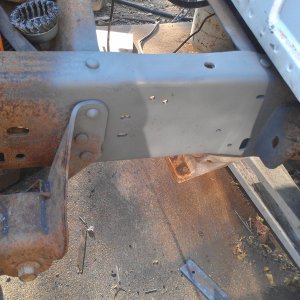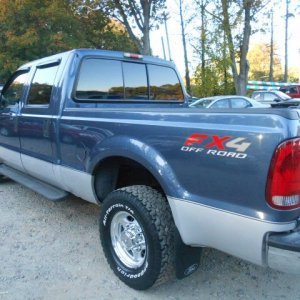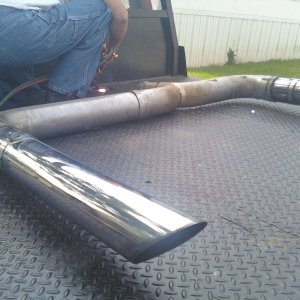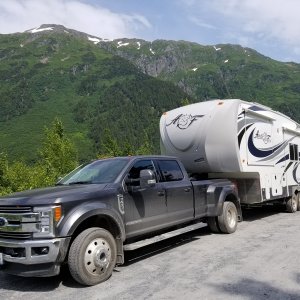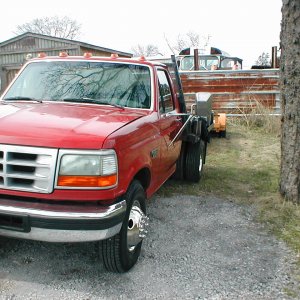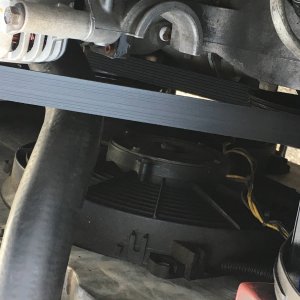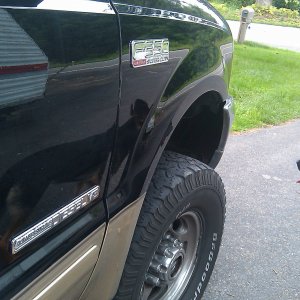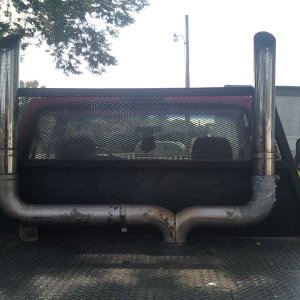rsr911
New member
Here's what I've learned:
Upflow processing, works great for "free" water and some emulsified water, takes 2-3 days to make a batch
Adding 15% RUG then mixing. Needs to settle a minimum of 1-2 days if the oil is emulsified (milky). Leaves sludge in the bottom of the barrel
Boiling. Garantteed to get the water out if you actually measure the temp and get the oil to 220F or higher. Some sludge, does not remove much other contaminate.
Centrifuge, no experience. Seems time consuming and messy.
Based on what I've learned and the fact that I am processing A LOT of oil each week my plan is to combine 1,2,3. Boil the incoming oil if it appears milky at all, add 10% RUG, mix and transfer to my holding tank. Since the oil is now dry and the RUG does it's thing in the holding tank I can then upflow at more than double my 10-20 gallon per day rate. I can do 45 gallons per day. I set up a 55 gallon drum as a funnel. As long as I keep on top of filling the holding tank with boiled and/or RUG blended oil I can make a batch every day. The boiling barrel I'm building is insulated, has a temp controller to shut off at 220F, and has a cone top to vent out of my garage.
So why is the guy who initially pushed the upflow idea now talking about boiling and RUG blend settling? Well I got 375 gallons of free hydraulic and cutting oil but it had about 3-5% water in it. I let it settle for over a month now and it still has water in it and it's still really milky. Adding 15% RUG didn't quite get it clear. Upflowing on a small scale test didn't do it either. I tried molecular sieve/zeolite and it works but is too costly. Boiling? Well it just worked great. RUG blend settling is great but what do you do with the sludge at the bottom when you're making a barrel a day? That's where the upflow fits in. Run the RUG blend through the upflow and it catches the sludge which you can drain off later. This leaves a mix barrel full of oil that just needs to be adjusted with a little more RUG and then fine filtered.
So is boiling necessary? In most cases no. In most cases either RUG blend settling or the upflow system will get the water/sludge out. However if you get a really milky batch of oil boiling is about the easiest way to get the water out. Do you need a fancy system like I'm building? Nope. I only did that because I'm processing oil for two other guys with a third looking to join the club. These guys are great but aren't super mechanically inclined and one of them is frequently 300-500 miles away from home so I want to guarantee that I'm putting good fuel in their tanks. When I was doing this just for myself the occasional filter change due to a bad batch was no big deal. I'd pump out the tank and fix the batch. But what about when my buddy is on the road with 100 gallons on board and he needs all of it to make the trip? and he has appointments back to back 100 miles apart?
So here is my opinion. The more I look at it I like drmiller100's (Doug's) method a lot. Great for small scale 1-2 batches a week. If you combine that will upflow afterwards then even better. In fact you could for all intents and purposes us a 55 gallon drum as your mix tank/funnel, run it through the upflow the starting the same day you blend and into a collection drum for final filtering. Every 2-3 batches drain the sludge out of the upflow. That system should let you do 3-4 batches a week and could just be added to Doug's system later. I guess a lot depends on your needs and fuel demand. Or you could boil (if needed), RUG blend then upflow as needed. If you have 100-300 gallons already RUG blended and settling you can run the upflow fast, like 2 gph and do a batch every day.
Upflow processing, works great for "free" water and some emulsified water, takes 2-3 days to make a batch
Adding 15% RUG then mixing. Needs to settle a minimum of 1-2 days if the oil is emulsified (milky). Leaves sludge in the bottom of the barrel
Boiling. Garantteed to get the water out if you actually measure the temp and get the oil to 220F or higher. Some sludge, does not remove much other contaminate.
Centrifuge, no experience. Seems time consuming and messy.
Based on what I've learned and the fact that I am processing A LOT of oil each week my plan is to combine 1,2,3. Boil the incoming oil if it appears milky at all, add 10% RUG, mix and transfer to my holding tank. Since the oil is now dry and the RUG does it's thing in the holding tank I can then upflow at more than double my 10-20 gallon per day rate. I can do 45 gallons per day. I set up a 55 gallon drum as a funnel. As long as I keep on top of filling the holding tank with boiled and/or RUG blended oil I can make a batch every day. The boiling barrel I'm building is insulated, has a temp controller to shut off at 220F, and has a cone top to vent out of my garage.
So why is the guy who initially pushed the upflow idea now talking about boiling and RUG blend settling? Well I got 375 gallons of free hydraulic and cutting oil but it had about 3-5% water in it. I let it settle for over a month now and it still has water in it and it's still really milky. Adding 15% RUG didn't quite get it clear. Upflowing on a small scale test didn't do it either. I tried molecular sieve/zeolite and it works but is too costly. Boiling? Well it just worked great. RUG blend settling is great but what do you do with the sludge at the bottom when you're making a barrel a day? That's where the upflow fits in. Run the RUG blend through the upflow and it catches the sludge which you can drain off later. This leaves a mix barrel full of oil that just needs to be adjusted with a little more RUG and then fine filtered.
So is boiling necessary? In most cases no. In most cases either RUG blend settling or the upflow system will get the water/sludge out. However if you get a really milky batch of oil boiling is about the easiest way to get the water out. Do you need a fancy system like I'm building? Nope. I only did that because I'm processing oil for two other guys with a third looking to join the club. These guys are great but aren't super mechanically inclined and one of them is frequently 300-500 miles away from home so I want to guarantee that I'm putting good fuel in their tanks. When I was doing this just for myself the occasional filter change due to a bad batch was no big deal. I'd pump out the tank and fix the batch. But what about when my buddy is on the road with 100 gallons on board and he needs all of it to make the trip? and he has appointments back to back 100 miles apart?
So here is my opinion. The more I look at it I like drmiller100's (Doug's) method a lot. Great for small scale 1-2 batches a week. If you combine that will upflow afterwards then even better. In fact you could for all intents and purposes us a 55 gallon drum as your mix tank/funnel, run it through the upflow the starting the same day you blend and into a collection drum for final filtering. Every 2-3 batches drain the sludge out of the upflow. That system should let you do 3-4 batches a week and could just be added to Doug's system later. I guess a lot depends on your needs and fuel demand. Or you could boil (if needed), RUG blend then upflow as needed. If you have 100-300 gallons already RUG blended and settling you can run the upflow fast, like 2 gph and do a batch every day.



